In today’s world of hyper-connectivity and digital convenience, a car’s infotainment system is no longer just a nice bonus but a central pillar of the driving experience. From seamless smartphone integration and voice control to augmented reality and immersive audio, automakers are racing to outdo one another in transforming the cabin into a high-tech cockpit.
But which cars truly lead the pack? This is where we unearth the top 10 cars with the best infotainment systems in 2025, ranked for innovation, user interface, responsiveness, feature set, and overall driver experience.
1. Mercedes-Benz S-Class (MBUX Hyperscreen)
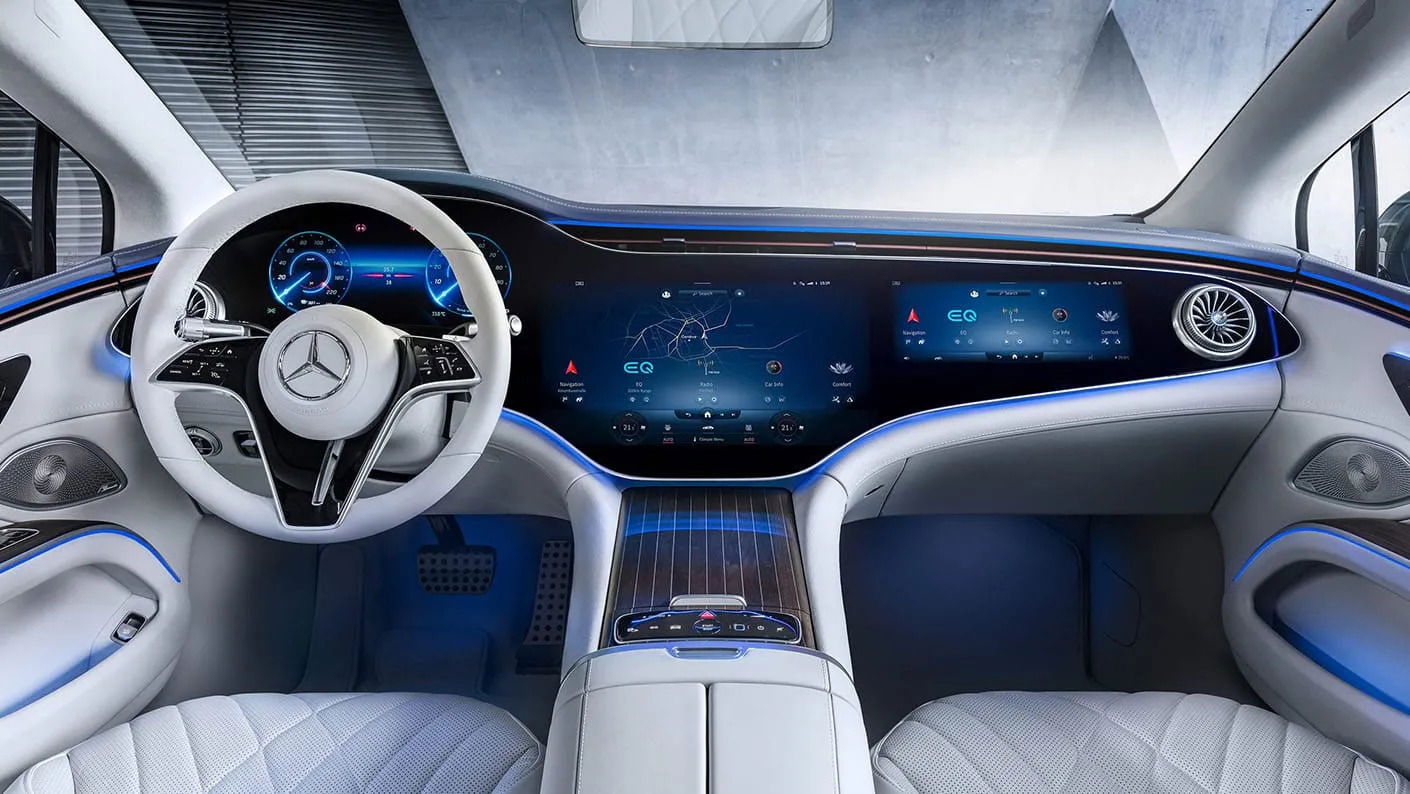
The S-Class has long set benchmarks in luxury, and with the MBUX Hyperscreen, Mercedes-Benz has redefined what an infotainment system can be. Spanning nearly 56 inches across the dashboard, the Hyperscreen melds three OLED displays into a seamless glass surface. The central touchscreen, driver display, and passenger screen work in harmony, delivering an experience that’s futuristic yet surprisingly intuitive.
What makes it exceptional:
- “Zero Layer” AI interface predicts what functions you need before you ask.
- Augmented Reality navigation overlays turn-by-turn directions onto a live camera feed.
- Voice assistant (“Hey Mercedes”) understands natural language and context.
- Fully integrated in-seat massage controls, ambient lighting, and climate settings.
2. BMW i7 / 7 Series (iDrive 8.5 with Rear Theater Screen)

BMW’s iDrive has been a pioneer in infotainment for over two decades, and the latest version—iDrive 8.5—is their most advanced yet. The standout in the i7 electric flagship and the new 7 Series is the optional 31.3-inch 8K BMW Theater Screen in the rear, transforming the back seat into a mobile cinema.
Key highlights:
- Cloud-based voice assistant (“Hey BMW”) with smart home integration.
- Full Android Auto and Apple CarPlay wireless compatibility.
- Gesture control lets you swipe and rotate through menus with a flick of the hand.
- Bowers & Wilkins Diamond Surround Sound System with 36 speakers.
It’s tech-forward, but not gimmicky. Every feature serves a purpose, delivering an elegant and immersive experience for driver and passengers.
3. Tesla Model S & Model X (Updated UI with 17-inch Touchscreen)

Tesla’s approach to infotainment is minimalist in design but rich in functionality. The centerpiece of the Model S and Model X interiors is a 17-inch cinematic touchscreen, now with a landscape orientation. The updated user interface is snappy, fluid, and built on the same kind of software logic you’d find in a premium tablet.
Why it stands out:
- Real-time traffic-based navigation with in-house map rendering.
- Native streaming for Netflix, YouTube, and Spotify.
- Integrated gaming capability with controller support.
- Regular over-the-air software updates, adding new features long after purchase.
While it lacks Android Auto or Apple CarPlay, Tesla’s ecosystem is so self-contained and fluid that most users never miss it.
4. Cadillac Escalade IQ (Next-Gen OLED Infotainment)

The all-electric Escalade IQ raises the bar for American luxury SUVs, and its infotainment system is a big part of that leap. The dash houses a 55-inch curved LED screen, with a 35-inch diagonal for the driver and an additional 20 inches for the passenger.
Why it’s impressive:
- Google Built-In: Native access to Google Maps, Assistant, and Play Store.
- Augmented Reality HUD with directional prompts and hazard alerts.
- AKG Studio Reference sound system with 36 speakers, including in the headrests.
- Passenger screen features video streaming with privacy filters to prevent driver distraction.
The Escalade IQ is where opulence meets Silicon Valley smarts.
5. Audi Q8 e-tron (MMI Touch Response + Virtual Cockpit Plus)
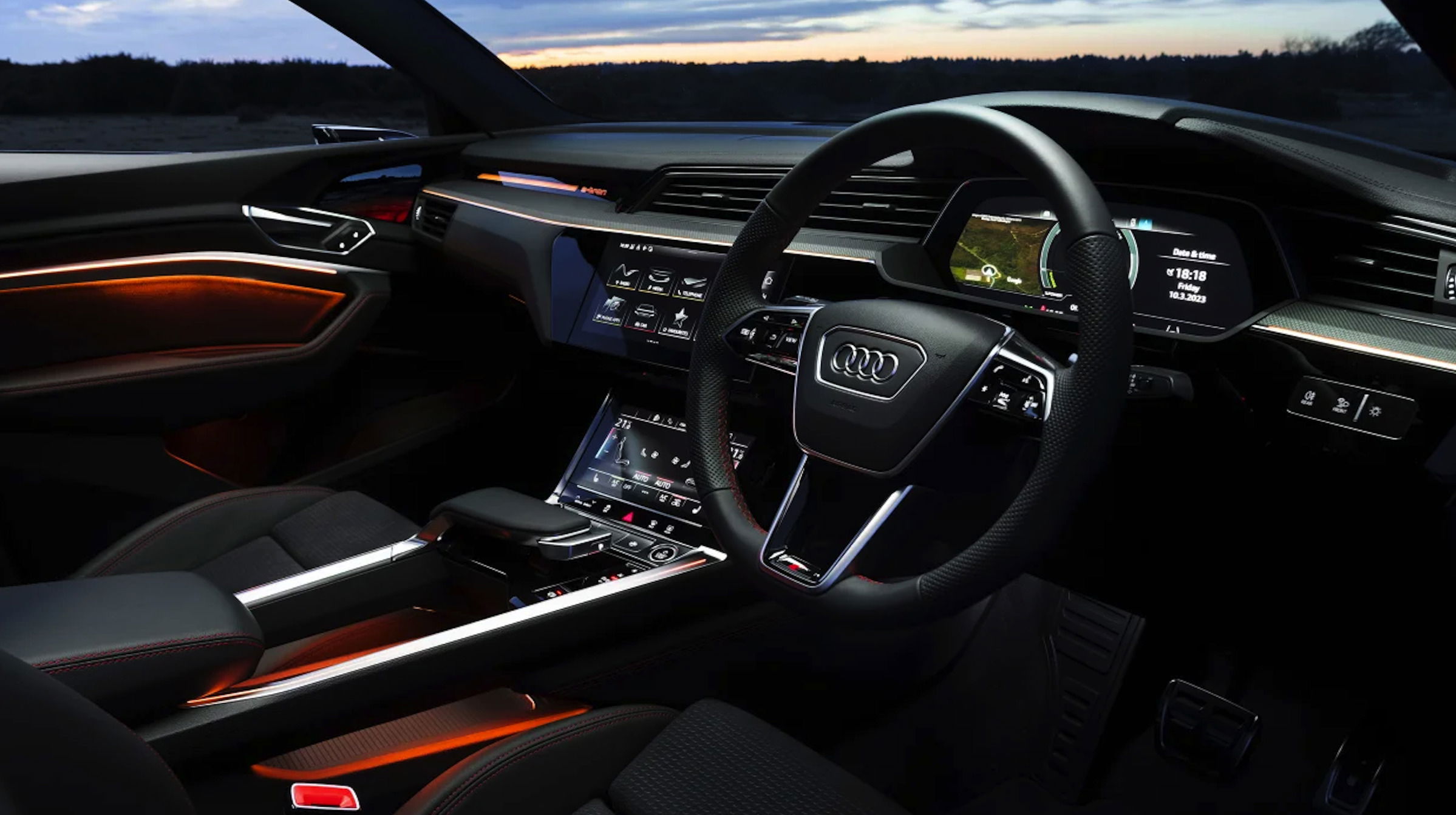
Audi’s MMI system has always been clean and ergonomic, but the new Q8 e-tron takes it to the next level with an immersive dual-screen setup and a futuristic Virtual Cockpit Plus digital gauge cluster.
Top features:
- Dual touchscreens with haptic feedback and voice command integration.
- Amazon Alexa built-in with smart home control.
- Google Earth navigation view with real-time satellite imagery.
- Customizable 12.3-inch digital instrument cluster.
Audi focuses on clarity and responsiveness, so every swipe, tap, or voice command feel like second nature.
6. Lucid Air (Glass Cockpit + Floating Center Screen)
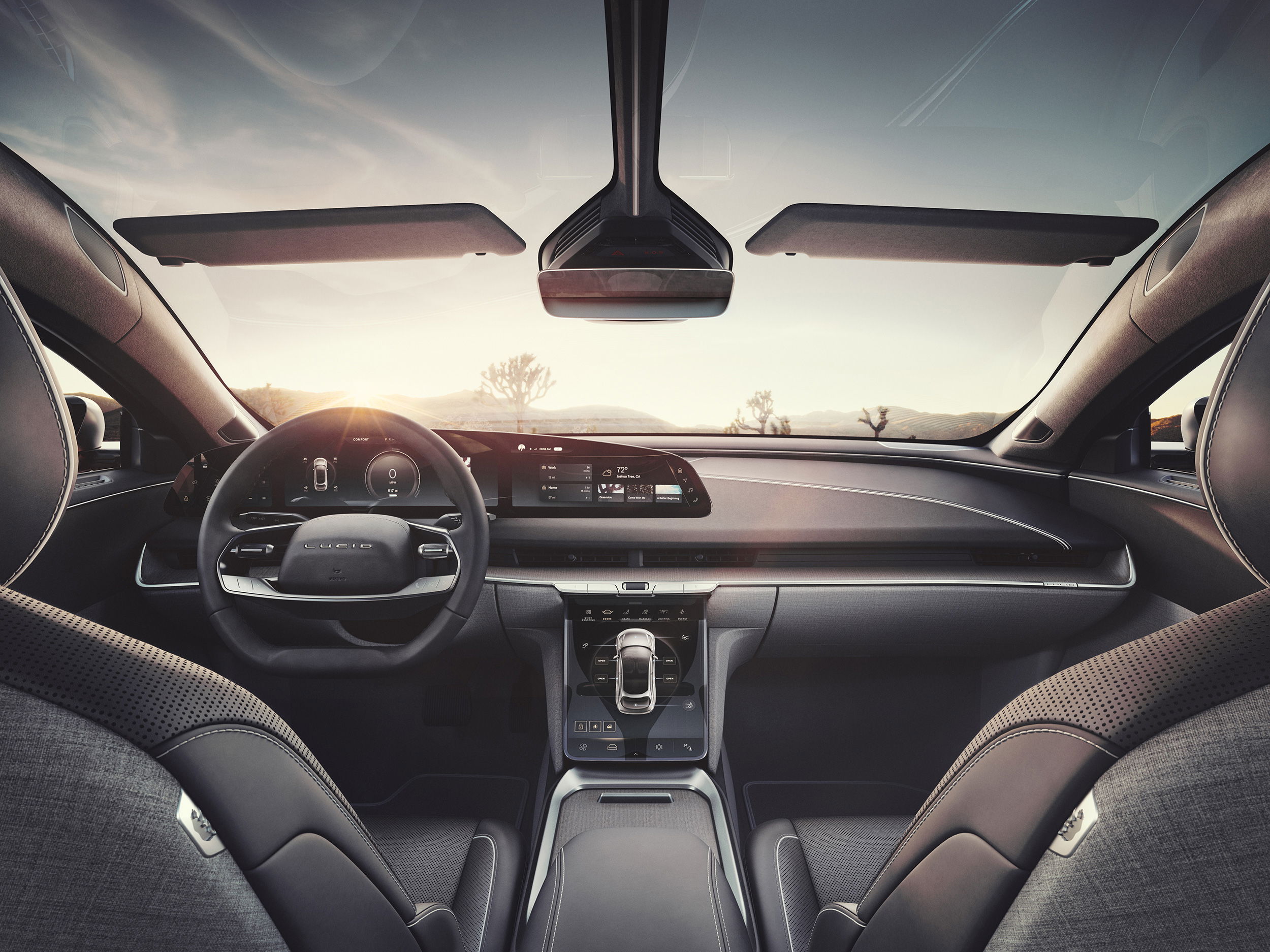
The Lucid Air, a luxury electric sedan that rivals the Model S, features a 34-inch curved Glass Cockpit display paired with a secondary “Pilot Panel” touchscreen that tucks away when not in use.
What sets it apart:
- Stunning graphics and seamless transition between screens.
- Alexa voice control, native Amazon Music, and Apple CarPlay support.
- OTA updates to improve functionality and add new apps.
- Intelligent climate and seat controls integrated into the lower screen.
Lucid offers a blend of art and intelligence in its interface, tailored for tech-savvy drivers.
7. Genesis GV80 (Infotainment with Premium UX Design)
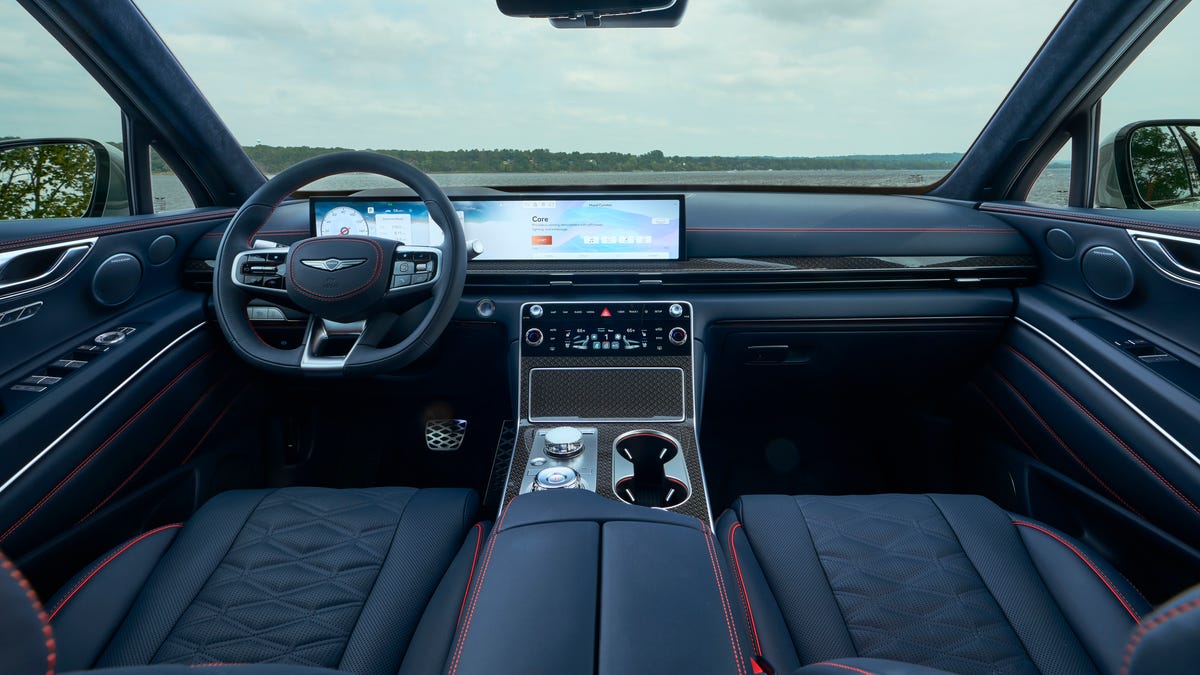
Genesis, Hyundai’s luxury brand, has quietly created one of the best infotainment systems in the industry. The GV80’s 27-inch OLED panoramic screen and rotary controller balance physical and digital input elegantly.
Why it’s remarkable:
- Split-screen capability for maps, music, and settings.
- Natural language voice assistant with offline functionality.
- Premium Lexicon audio system designed by Harman.
- Rear-seat controls and entertainment add to the luxury.
The interface feels closer to something from a boutique tech brand than a mainstream carmaker—clean, thoughtful, and highly functional.
8. Porsche Taycan (Porsche Communication Management)
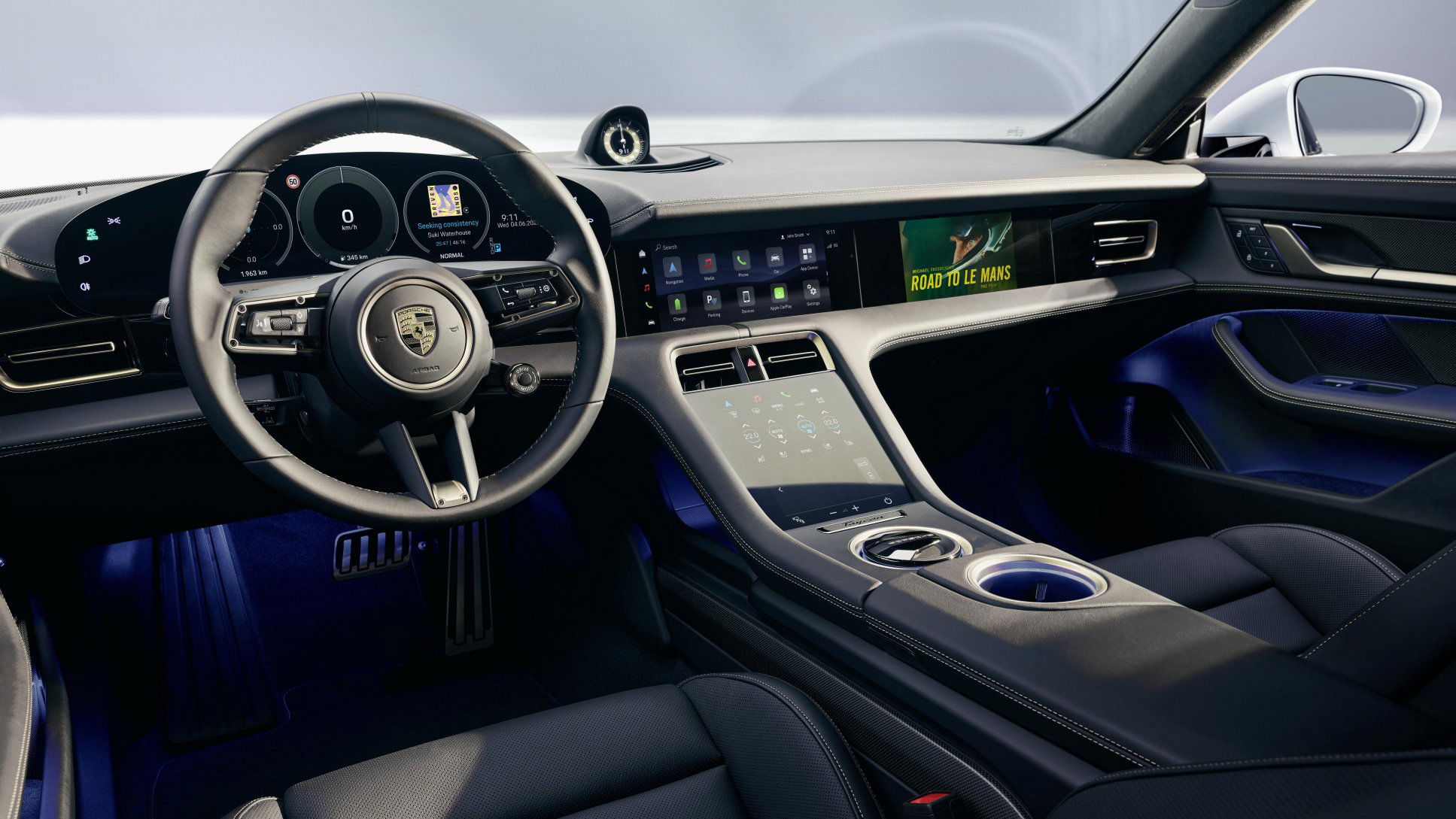
Performance and precision are core to Porsche’s DNA—even in their infotainment. The Taycan EV blends physical buttons with responsive touchscreens, delivering a user experience that’s as engaging as the drive.
Infotainment perks:
- Dual center screens, one for media/climate, one for vehicle settings.
- Optional passenger touchscreen and curved digital gauge display.
- Apple Music integration without needing a phone.
- Voice control optimized for navigation and performance functions.
It’s one of the few systems that manages to be sporty, luxurious, and technologically advanced all at once.
9. Volvo EX90 (Google Built-In + Clean Minimalism)

Volvo’s new flagship EV, the EX90, brings Google’s ecosystem directly into the car without looking or feeling like a tech overload. The vertical 14.5-inch center display and minimalist aesthetic reflect the brand’s Scandinavian ethos.
Why it works:
- Native Google Assistant and Google Maps with EV range integration.
- Customizable digital gauge cluster with lidar-based driver alerts.
- Clean tile-based UI that reduces distractions.
- OTA updates and app expansion via Google Play.
It’s intuitive, calming, and smart—all in line with Volvo’s reputation for safety and practicality.
10. Hyundai Ioniq 5 N (Performance Meets Tech)
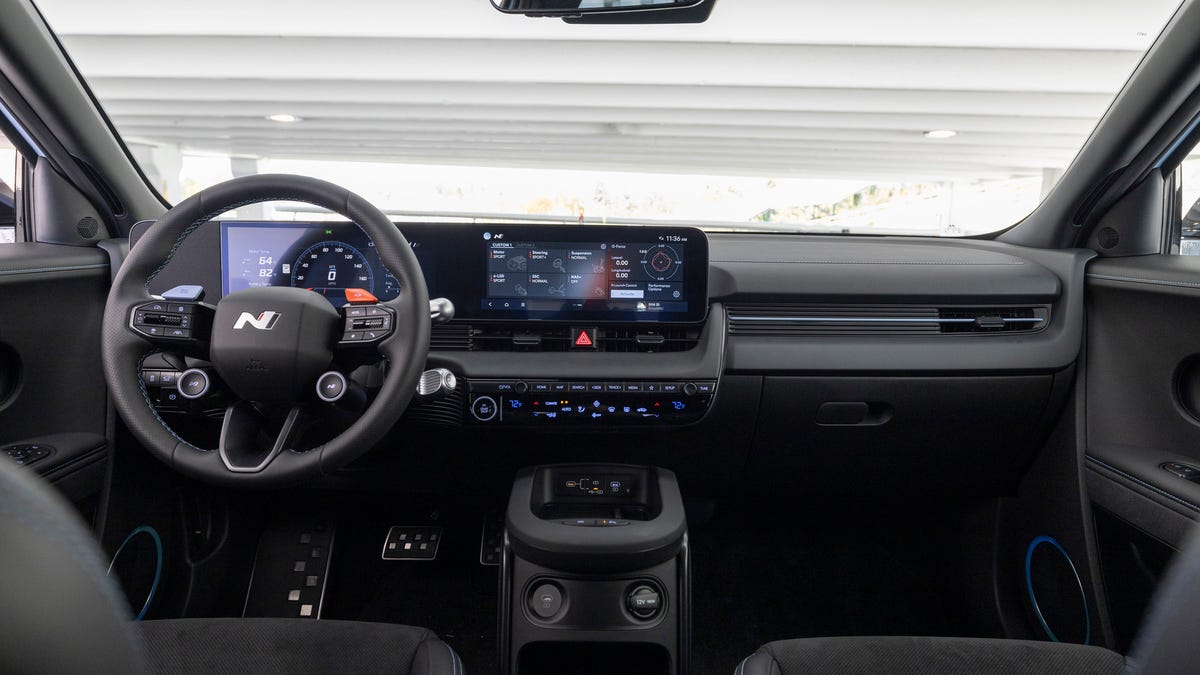
Hyundai’s performance division has given the Ioniq 5 N not just speed, but one of the most satisfying infotainment setups under $75,000. It features a dual 12.3-inch screen layout, advanced head-up display, and a driver-focused interface.
Key features:
- Performance data overlays and real-time torque output displays.
- Fully integrated Apple CarPlay/Android Auto and voice assistant.
- Custom drive mode controls via steering-wheel interface.
- EV-specific range guidance and charging station locators.
How To Upgrade Older Cars With Infotainment Systems
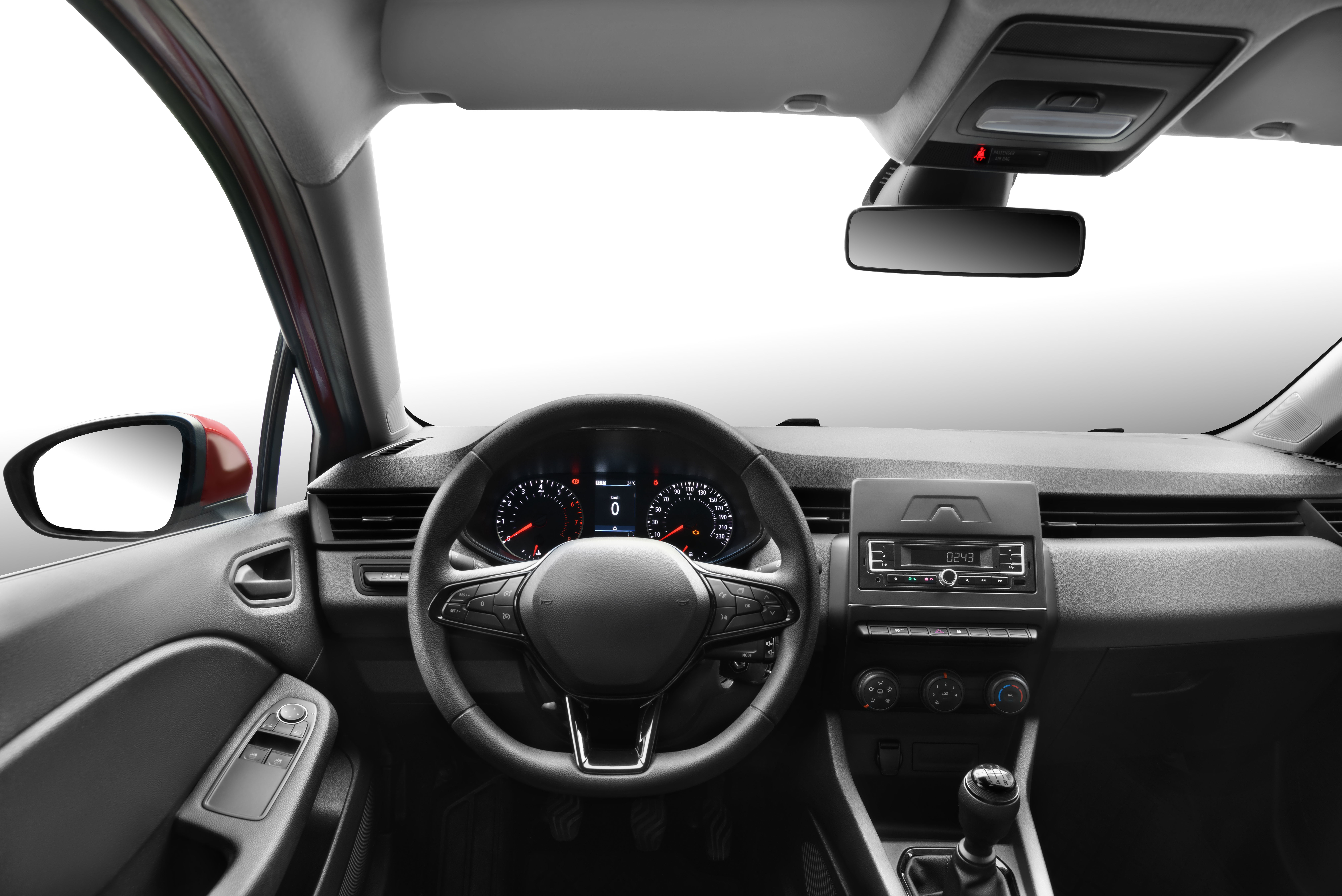
Upgrading an older car with a modern infotainment system is one of the most transformative (and satisfying) tech makeovers you can give your ride. It brings your dashboard into the 21st century with features like touchscreen controls, Bluetooth, navigation, Apple CarPlay, Android Auto, and even backup cameras—all without buying a new car.
Here’s how to do it:
Step 1: Assess Your Current Setup
Start by identifying your car’s head unit size:
- Single DIN: 2 inches tall
- Double DIN: 4 inches tall
This determines what kind of aftermarket system will fit your dash. You’ll also want to check if your car has steering wheel controls or factory amps, which may require special adapters.
Step 2: Choose the Right Infotainment System
Look for a system that fits your needs and budget. Key features to consider:
- Touchscreen size (typically 6–10 inches)
- Smartphone integration (Apple CarPlay, Android Auto)
- Bluetooth for hands-free calls and streaming
- Navigation (built-in GPS or phone-based)
- Backup camera support
- Audio quality (if you’re an audiophile)
Brands like Pioneer, Kenwood, Alpine, and Sony are popular for reliability and sound quality.
Step 3: Gather Installation Gear
You’ll likely need:
- Wiring harness adapter (to avoid cutting factory wires)
- Dash kit (to fit the new unit into your dashboard)
- Antenna adapter
- Panel removal tools
- Screwdrivers and electrical tape
These are often bundled in vehicle-specific installation kits.
Step 4: Install the System
1. Disconnect the battery to avoid electrical issues.
2. Remove the old unit using panel tools and unscrew the head unit.
3. Connect the new system using the wiring harness and adapters.
4. Mount the new unit with the dash kit.
5. Reassemble the dash and reconnect the battery.
6. Test everything—touchscreen, audio, Bluetooth, camera, etc.
If DIY isn’t your thing, many electronics retailers offer professional installation.
Bonus Upgrades
While you’re at it, consider adding:
- Backup camera
- Dash cam
- Wireless phone charger
- Head-up display (HUD)
- Blind-spot monitoring sensors
These can all be retrofitted to older vehicles and dramatically improve safety and convenience.